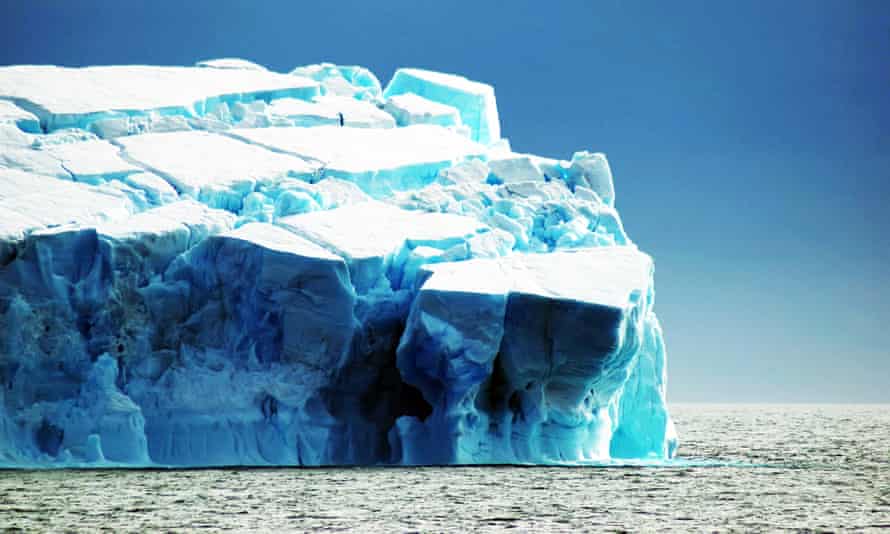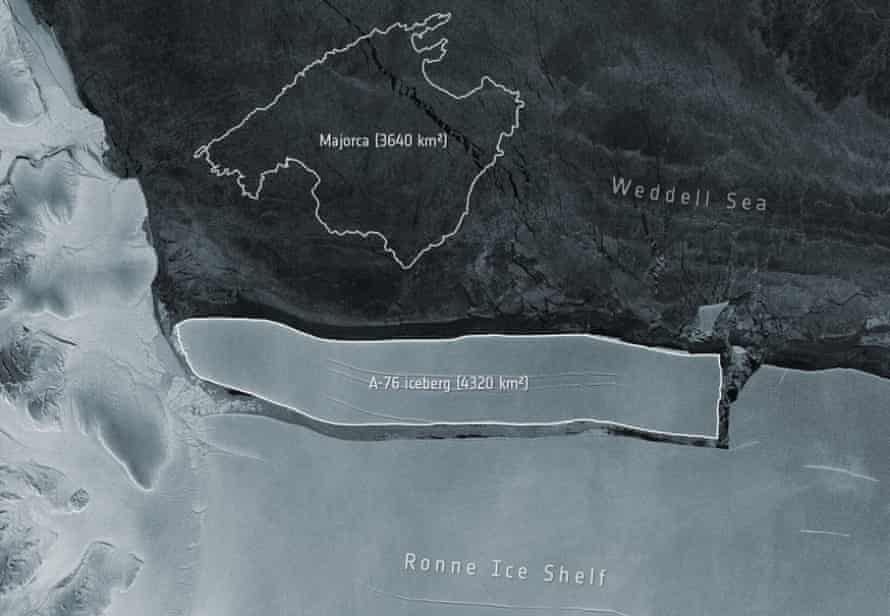Extract from The Guardian
The 4,320 square kilometre slab of ice dubbed A-76 broke off Ronne shelf and is floating in Weddell sea.

First published on Thu 20 May 2021 11.23 AEST
A giant slab of ice almost four times the size of New York City has sheared off from the frozen edge of Antarctica into the Weddell Sea, becoming the largest iceberg afloat in the world, according to the European Space Agency.
The newly calved berg, designated A-76 by scientists, was spotted in recent satellite images captured by the Copernicus Sentinel-1 mission, the space agency said in a statement posted on its website with a photo of the enormous, oblong ice sheet.
Its surface area spans 4,320 sq km (1,668 sq miles) and it measures 175km (106 miles) long by 25km (15 miles) wide.

An image from the European Space Agency showing the A-76 and how it compares in size to Majorca. Photograph: European Space Agency
By comparison New York City’s total area of land and water is 1,213 sq km while the Spanish island of Mallorca in the Mediterranean occupies 3,640 sq km.
Another big Antarctic iceberg that had threatened a penguin-populated island off the southern tip of South America has since lost much of its mass and broken into pieces, scientists said earlier this year.
A-76 was first detected by the British Antarctic Survey and confirmed by the US National Ice Center based in Maryland using imagery from Copernicus Sentinel-1, consisting of two polar-orbiting satellites.
The Ronne ice shelf on the flank of the Antarctic peninsula is one of the largest of several enormous floating sheets of ice that connect to the continent’s landmass and extend out into the surrounding seas.
Periodic calving off of large chunks of those shelves is part of a natural cycle. But some ice shelves along the Antarctic peninsula have undergone rapid disintegration in recent years, a phenomenon scientists believe may be related to climate change.
No comments:
Post a Comment